Many people think winters are the end of the flowering season. It is a half-truth, winter is a dormant season for many plants, but that does not mean it is completely over.
Many beautiful flowers bloom in winter, adding color to your landscape.
We have listed some flowers that will flower in winter with their care needs.
We recommend checking the plant’s temperature requirement to ensure they will thrive in winters.
Hellebore
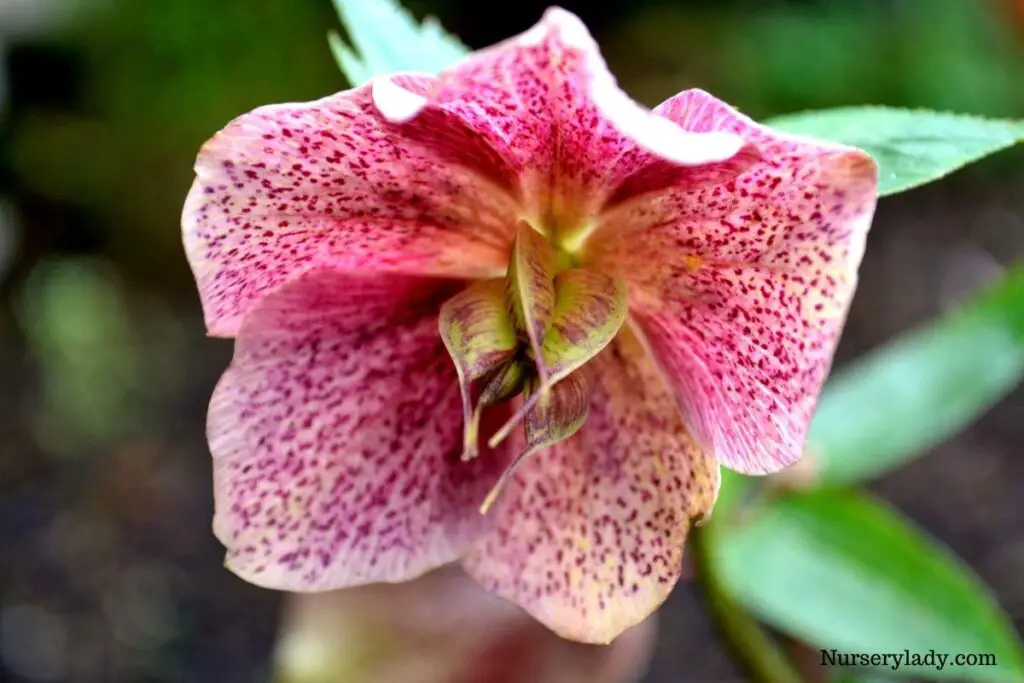
Hellebore has evergreen leaves and rose-like flowers. They are slow-growing and also toxic to pets.
They will add color to your winter garden, also depending on the climate. They can withstand tough winters and appear in mid-winter.
Light: Hellebores thrive in partial to full shade. When keeping in full sun, keep them under a shade or near deciduous trees for shade. Too much light can scorch their leaves and also affect their growth.
Watering: Hellebores like to stay moist when young. After maturing, they do not need frequent watering; just watering when the soil is dry is fine. Never keep them soggy and ensure proper drainage.
Fertilizer: While planting hellebore, mix organic fertilizer, compost, or manure into the soil. Continue fertilizing in spring and fall with a balanced fertilizer. Avoid feeding with chemical fertilizers and prefer organic.
General care: Hellebore prefers mild weather and suffers in freezing temperatures. Also, they need to be protected from harsh winter winds. They can thrive in all humidity ranges and ensure proper airflow around them.
Violas
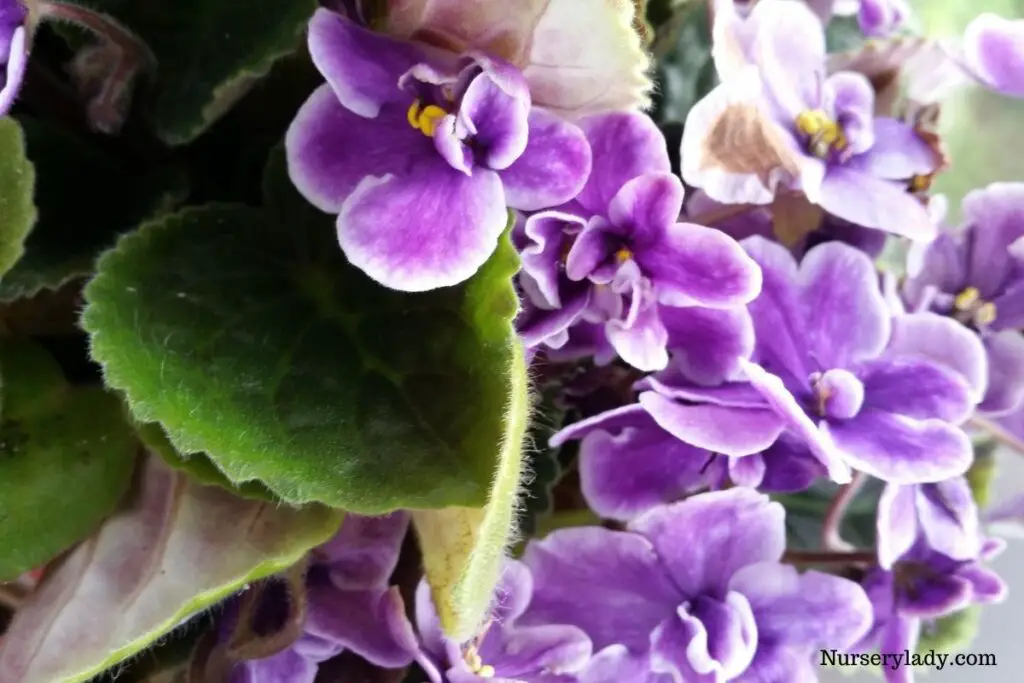
Violas produce tiny blooms and, through self-seed give you years of delight.
They are fast-growing and bloom for most of the cold months, and their strikingly attractive blooms are used to decorate cakes and other confectioneries.
Light: Violas like full sun but afternoon, harsh heat can damage them. Please keep them in the shade in the hottest months. During the cool months, they can be kept in full sun.
Watering: Watering them consistently will keep them happy. Make sure the excess water is draining after watering. Let the soil dry completely before watering but not bone dry.
Fertilizer: Feed violas monthly with a balanced fertilizer from spring through summer. You can also add slow-release fertilizer once in spring and then in summer.
General care: Violas prefer cool temperatures, from 40°F to 70°F. High heat can damage them, and some protection is needed. Remove faded flowers by cutting at the base of the flower stem for prolonged blooming.
Calendula

Calendula produces bright yellow flowers resembling daisies. They bloom in winters and add color to your garden, interiors, etc. They can be grown easily in pots, hanging baskets, gardens, pathways, etc.
Light: Calendula prefers full sun exposure, but some shade in the afternoon sun in summers can scorch their leaves. They can be kept in direct sun in cool temperatures.
Watering: Water calendula consistently till they are established. After that, watering when the soil is dry is fine. They are okay with underwatering, but overwatering can lead to root rot.
Fertilizer: Calendula can thrive without feeding, especially if the soil medium is rich. Calendula can be fed with a water-soluble fertilizer. If growing in pots, feed them monthly with a diluted balanced fertilizer in the growing season.
General care: Calendula thrives in mild weather. They are more comfortable in cool temperatures and may even die in the hottest months of summer.
Pansies
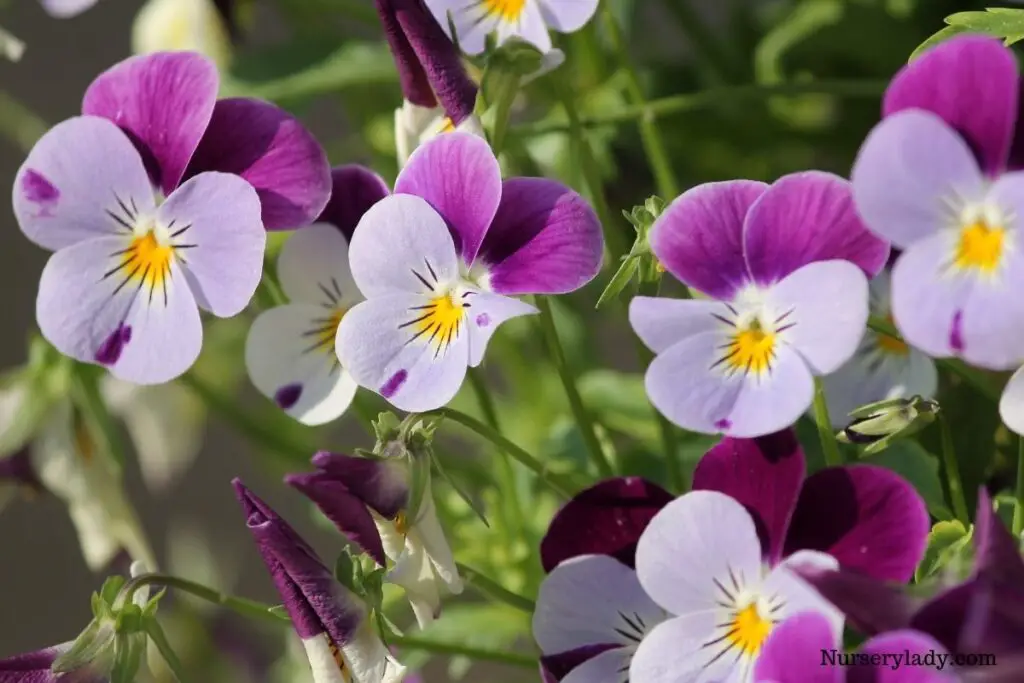
Pansies produce butterfly-shaped blooms in many different colors.
They are fast-growing and winter-loving plants, and they will brighten your garden during winters due to their cold-hardy nature. They grow well in containers, borderlines, etc.
Light: Pansies thrive in full sun to partial shade, and they enjoy some shade during the harsh afternoon sun. In partial shade, they have better and fresh-looking blooms.
Watering: Water pansies regularly to keep its soil moist. Ensure proper drainage to avoid sogginess. Too much watering can lead to fungal problems, root rot.
Fertilizer: Feed pansies with balanced fertilizer by diluting to half the strength. Do not overfeed as it will lead to leggy plants and reduce blooming. Monthly foliar feeding also promotes growth.
General care: Pansies like cool temperatures. In high heat, they tend to suffer and can even die. Deadhead the spent flowers, or they will self-seed and root.
Looking for gardening supplies? We have tested 100's of products before recommending them to you guys. Check out our best pick below:
| Image | Gardening Supplies | Best Price? |
|---|---|---|
 Top
Top Top
Top | Raised Garden Bed Kit | Check On Amazon |
 | XLUX Soil Moisture Meter, Plant Water Monitor, Soil Hygrometer Sensor for Gardening, Farming, Indoor and Outdoor Plants, No Batteries Required | No Results |
 Top
Top Top
Top | 82 Pcs Garden Tools Set and Extra Succulent Tools Set | Check On Amazon |
 | Joeys Garden Expandable Garden Hose with 8 Function Hose Nozzle, Lightweight Anti-Kink Flexible Garden Hoses, Extra Strength Fabric with Double Latex Core, (50 FT, Black) | No Results |
 Top
Top Top
Top | Dual Chamber Compost Tumbler | Check On Amazon |
 Top
Top Top
Top | Sunnyglade Plant Stakes | Check On Amazon |
 Top
Top Top
Top | Organic Cold Pressed Neem Seed Oil | Check On Amazon |
 Top
Top Top
Top | Mighty Mint Gallon :-Insect and Pest Control Peppermint Oil | Check On Amazon |
 Top
Top Top
Top | Scotts DiseaseEx Lawn Fungicide | Check On Amazon |
 Top
Top Top
Top | Jacks Classic 20-20-20 All Purpose Fertilizer | Check On Amazon |
 Top
Top Top
Top | 30,000 Seeds Pollinator Attracting Wildflower Mixture | Check On Amazon |
 Top
Top Top
Top | Survival Vegetable Seeds Garden Kit-Over 16,000 Seeds | Check On Amazon |
Sweet alyssum
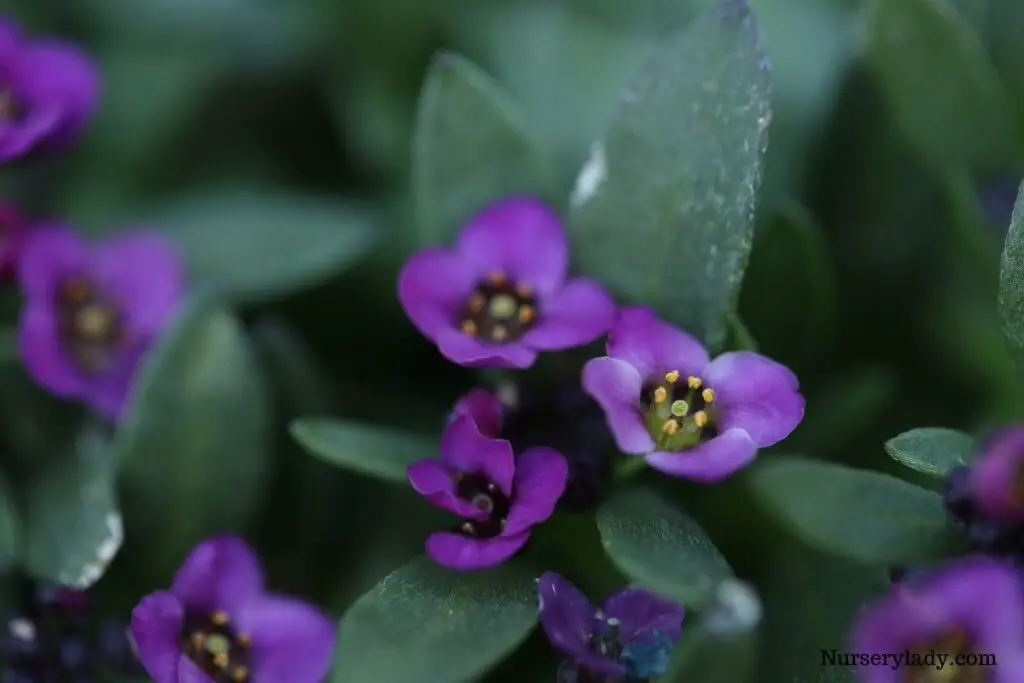
Sweet alyssum with their colorful flowers spread like a carpet in your garden. They have hairy green foliage, and they are easy to grow and bloom throughout the fall and winter in frost-free weather.
Their flowers have a sweet fragrance and bloom year after year. They fill space and look great in pathways, walkaways, edges in the garden, etc.
Light: Sweet alyssum thrives in full sunshine, and they need shade in hot summer as it can burn their leaves. If kept in the shade, make sure their soil is sitting in water for long periods.
Watering: Sweet alyssum likes to be frequently watered during hot summer. They do not appreciate sitting in water for long periods, nor do they like long dry spells. Proper drainage is essential to avoid root rot and fungal problems.
Fertilizer: Sweet alyssum growing in the ground does need feeding. If the soil is poor, you can feed them with a balanced fertilizer. For plants growing in pots, use water-soluble balanced fertilizer in the growing period. Feed once again after the bloom is spent to stimulate new growth.
General care: Sweet alyssum can grow in mild temperatures. They may stop blooming in high heat but pick up again in fall. They do well in average humidity but in high humidity waterless to avoid fungal problems.
Snowdrop
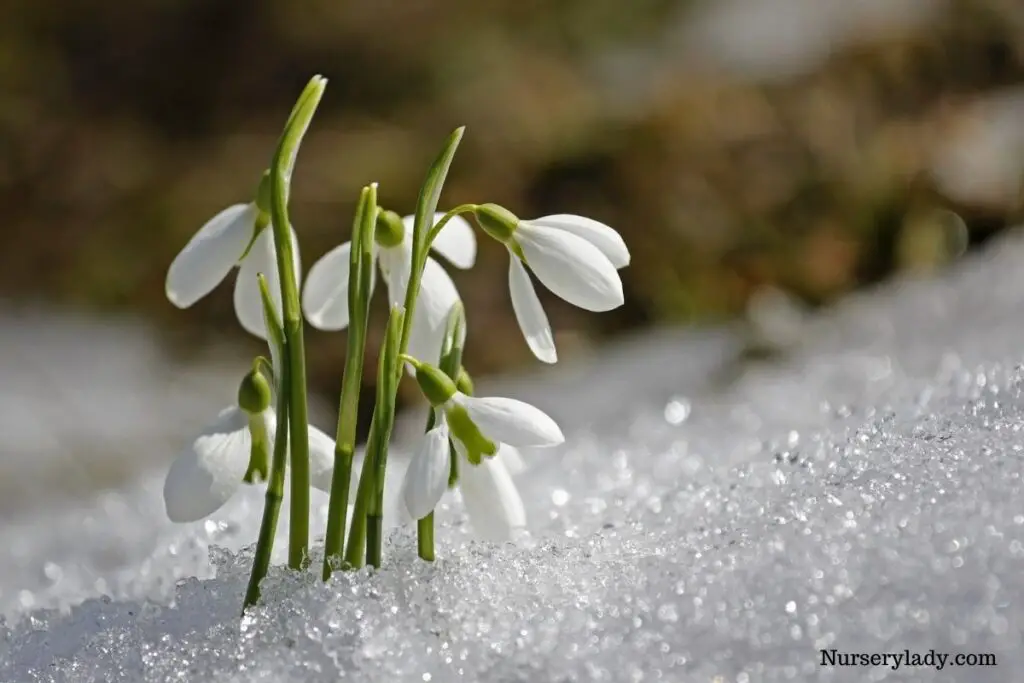
Snowdrop produces small white blooms and blooms in cold weather as they are cold-hardy. They add a breath of fresh air in winters and spring.
They look best in rock gardens and can be grown in containers too. Plant them closer to achieve a showy display.
Light: Snowdrop appreciates full sun to partial shade. They can grow in full sun but not the harsh direct sun of summers. Keep them under shade in the harsh sun to avoid any damage. 6-8 hours of indirect bright light improve blooms.
Water: Sundrop needs little watering in cool months, and they can thrive in dry soil in cool climates, but during summer, they need consistently moist soil. Ensure proper drainage and let the soil dry halfway before watering.
Fertilizer: Feed snowdrop with a balanced granular fertilizer after flowering. Too much feeding can inhibit flowering. You can also add compost into the soil to promote growth and blooms.
General care: Snowdrops are cold-hardy, and they may struggle in too high a temperature. Remove the blooms after they have turned yellow, as it will help them store nutrition for next season.
Cyclamen
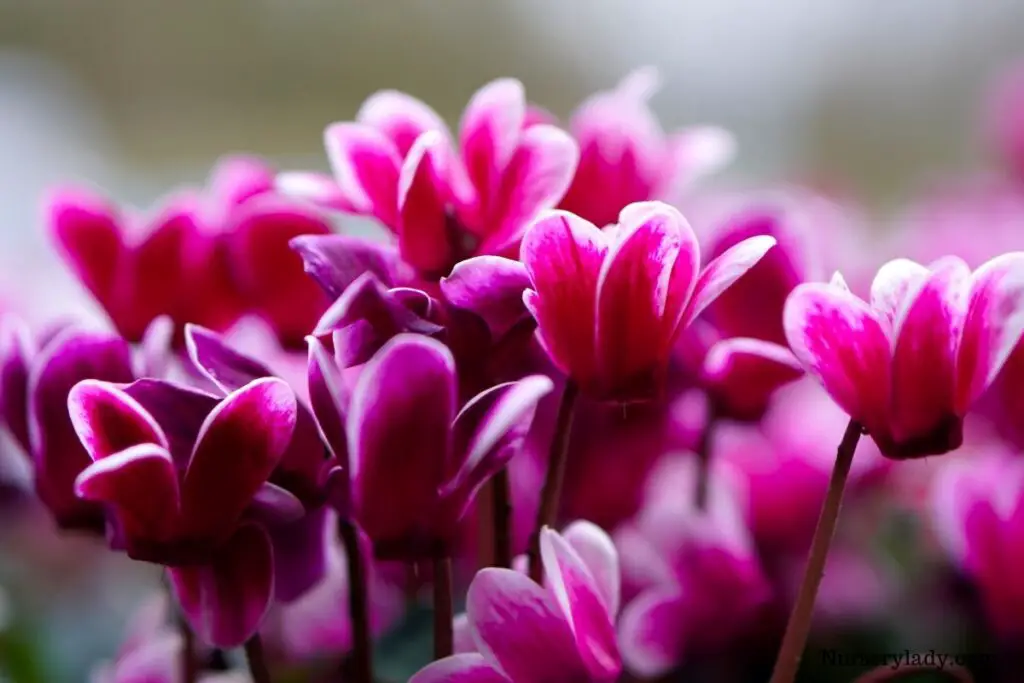
Cyclamen produces tiny flowers with a sweet fragrance with medium green foliage.
They flower in various colors like pink, purple, red, white, etc. They are grown as houseplants and bloom in winter holidays in containers, garden centers, etc. They are toxic to pets.
Light: Cyclamen thrives in bright indirect light and can stay in direct sun during winter. During summer, they go dormant and should be kept in a cool, dar place with proper ventilation.
Watering: Water cyclamen by checking the soil moisture. Water when the soil is halfway dry when the plant is actively growing. In dormant months water is only to prevent the soil from completely drying out.
Fertilizer: Feed cyclamen with low-nitrogen fertilizer by diluting it to half the recommended strength while the plant is actively growing. In dormant months avoid feeding at all.
General care: Cyclamen thrives in cool temperatures. They prefer temperatures ranging between 60°F to 70°F, and they need high humidity during winter. During cold winds, keep the plant in a safe and warm spot.
Daffodils
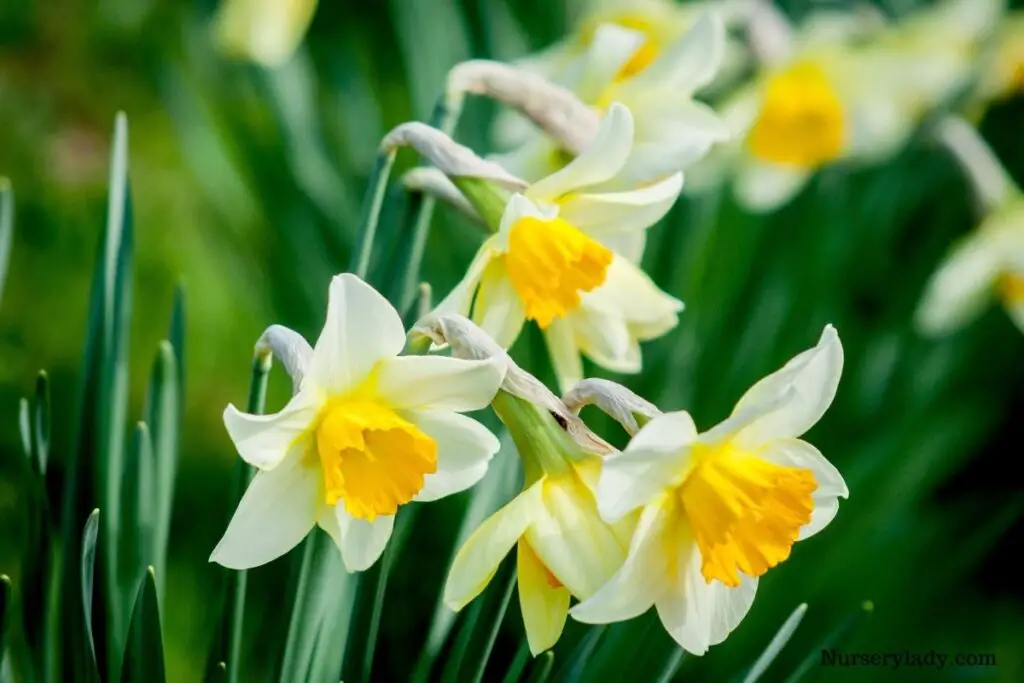
Daffodils produce bright yellow-orange blooms, and they will bloom for years if properly taken care of and grace your garden in late winter. They grow up to 30 inches tall and 12 inches wide.
Light: Daffodils like an abundance of light and thrive in full sun. They can grow in dappled light too, but the growth will be slower. Use grow light if there is very little light available for the plant.
Watering: Daffodils like consistently moist soil and will appreciate regular watering during spring and fall. In summer, they go dormant and prefer staying dry.
Fertilizer: Daffodils are light feeders and need some food only if the soil is poor. Feed with bulb food or bone meal when the leaves begin to emerge.
General care: Daffodils need cold weather to set their roots. They can thrive in all humidity levels, and different varieties thrive in different temperatures.
Protea
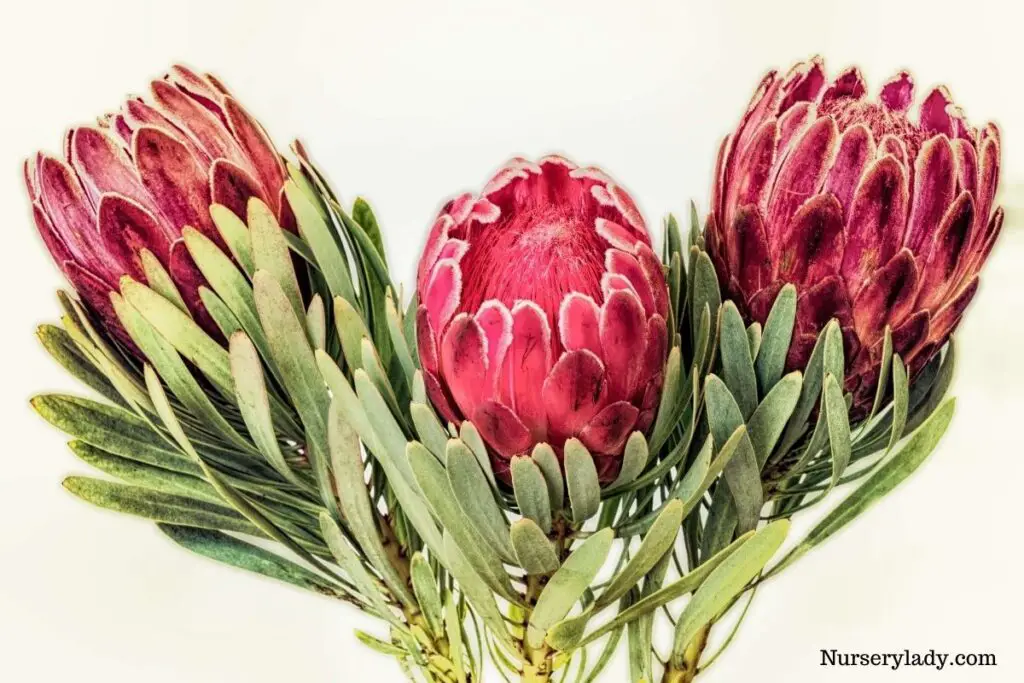
Protea can be grown from shrubs to trees, depending on the variety. They produce unique flowers that bloom from late winter to spring. They can grow up to 26 feet tall, depending on the variety.
Light: Hellebore thrives in partial to full shade, and the afternoon sun can be harsh on them. Some shade or planting near trees for shade will save them from any damage.
Watering: Water hellebore to keep the soil consistently moist but not soggy. Established hellebore can withstand dry spells for a short period.
Fertilizer: Add hellebore with organically rich food or compost while planting it. Fertilize throughout the spring and early fall with a balanced fertilizer.
General care: Hellebore can thrive in cold weather but should be protected in harsh cold winds. Please keep them in a safe spot and away from windows during frost. They can bear different ranges of humidity.
Camellia
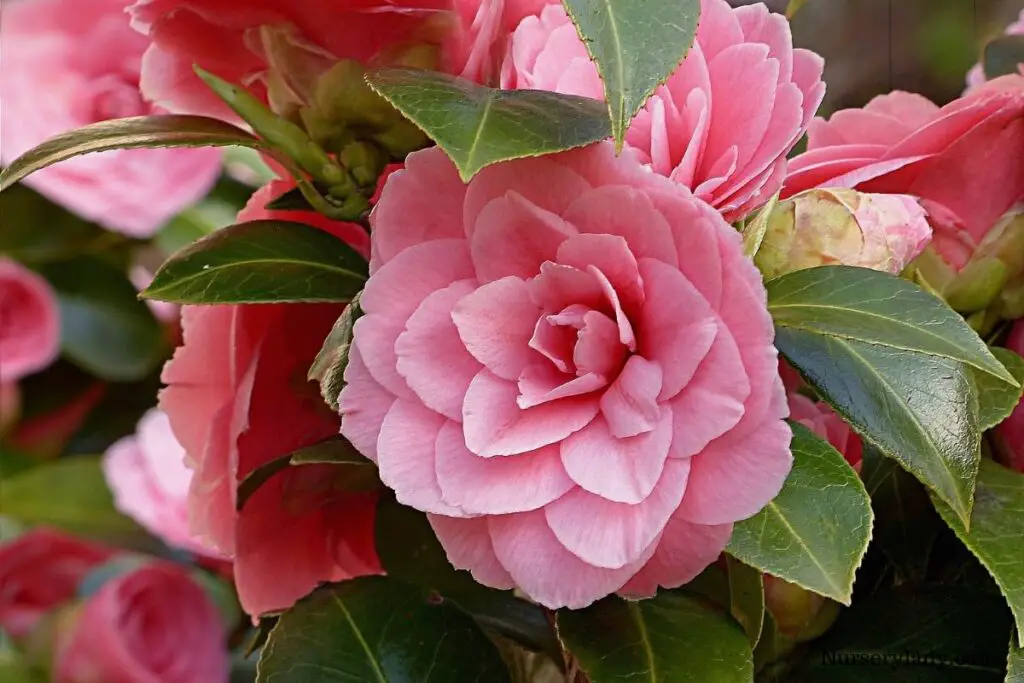
Camellia produces lush blooms in white, pink, red and can live for years. They have shiny green foliage.
They grow in containers, borders, hanging pots, etc., and are a lush addition to a winter garden.
Light: Camellia thrives in shady locations. They can grow in bright light, but the full sun can cause damage. Some shade is you should avoid best and direct sun.
Watering: Camellia likes frequent watering, especially during bud development. Keeping them dry for long periods will result in less flowering and weak plants.
Fertilizer: Feed camellia in July with high potassium fertilizer to promote petal development. Also, slow-release fertilizer once in the spring will keep the plant bushy and healthy.
General care: Camellia likes cool temperatures but suffers from frost. Little pruning is fine after flowering to get rid of dead branches. Also, remove the droopy branches so that they do not consume the energy of the plant.
Crocus
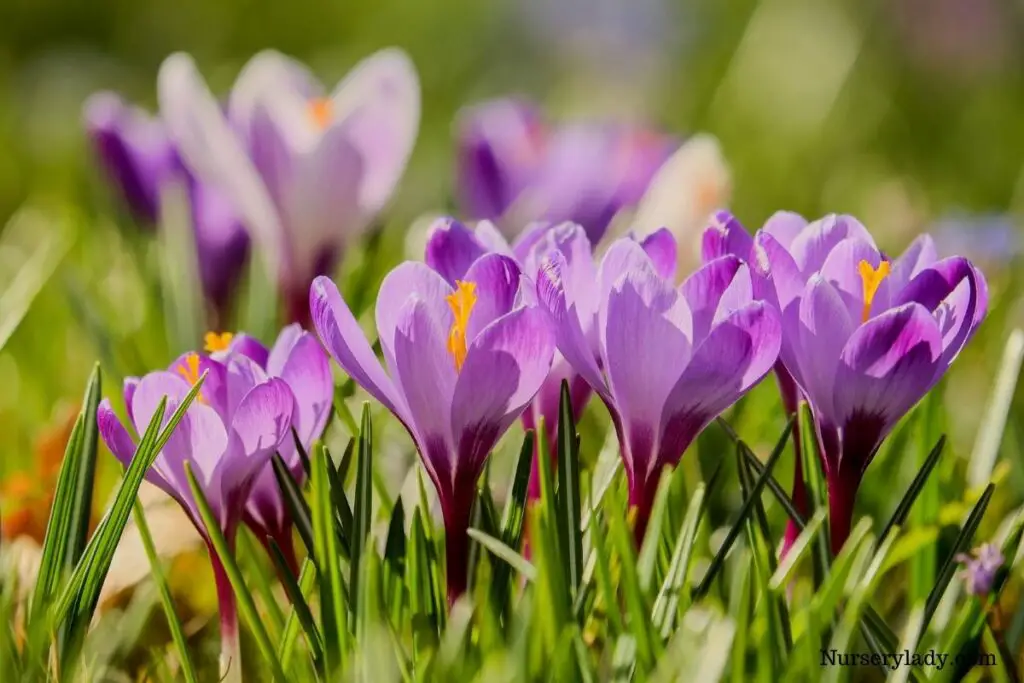
Crocus produces flowers in colors like mauve, lavender, yellow, etc. They are seen blooming through the snow. They are fast-growing plants, and different varieties bloom in different seasons.
Light: Crocus likes full sun and can grow in partial shade too. In winter, please keep them in full sun, but in summers, some shade during the afternoon sun is appreciated.
Watering: Crocus likes frequent watering in spring and fall. During winters also keep them well watered but not soggy. During summer, keep them under-watered as it is their dormant period.
Fertilizer: Crocus are light feeders, and top dressing with bone meal in the fall is enough. Do not cut their leaves till they turn yellow as crocus stores their energy in their bulbs.
General care: Crocus are cold hardy and need winter cold to set their blooms. They can grow in all humidity levels, but too much can promote root rot.
Winter Jasmine vines
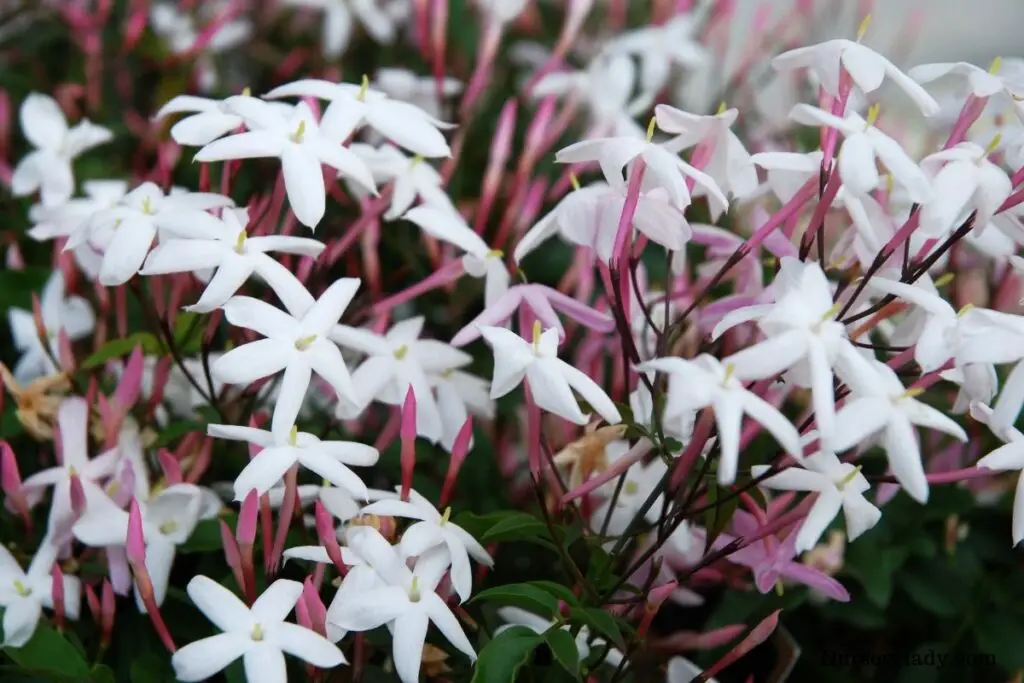
Winter Jasmine produces yellow flowers about 1 inch wide. The plant can grow up to 15 ft high when supported and 7ft wide.
They bloom in late winter and grow at a moderate speed.
Light: Winter Jasmine can grow from full sun to partial sun. They love the sun, and the afternoon sun in the winter will keep them healthy and happy.
Watering: Water winter jasmine when the soil is halfway dry from the top. Do not overwater it and ensure proper drainage to avoid sogginess. You can simply touch the top of the soil and check its moistness and water accordingly.
Fertilizer: Feed winter jasmine with a slow-release fertilizer for abundant blooming. They are light feeders and should not be over-fertilized.
General care: Winter jasmine is winter hardy that can survive temperatures as low as 5°F. Support it if you want it to climb as vines. If you want to grow it as a shrub, prune it back.
Japanese Pieris
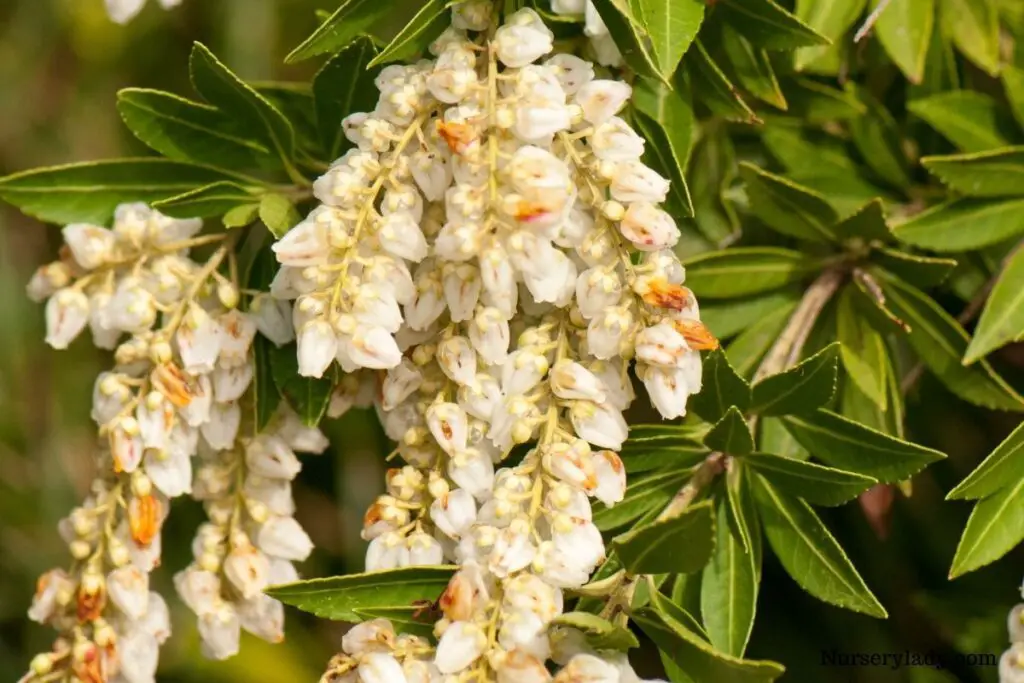
Japanese Pieris produces delicate flowers in colors like white, pink, etc.
They have leathery green leaves, and they bloom in late winter and last for weeks. They are slow-growing plants but are toxic to pets and humans.
Light: Japanese Pieris can be grown in full sun during the winter months. In summer, direct sun can damage them, and some shade is required.
Watering: Japanese Pieris thrives when watered deeply in regular intervals. Keep the soil moist but never soggy. Keeping the soil in standing water will lead to root rot.
Fertilizer: Feed Japanese Pieris with fertilizer made for azaleas in mid-February and mid-May. Mulching also helps boost the nutrient content of the plant.
General care: Japanese Pieris can thrive in the cold but should be protected from harsh cold winds. They can survive in both dry and humid conditions. Please keep them in good air circulation.
Winter aconite
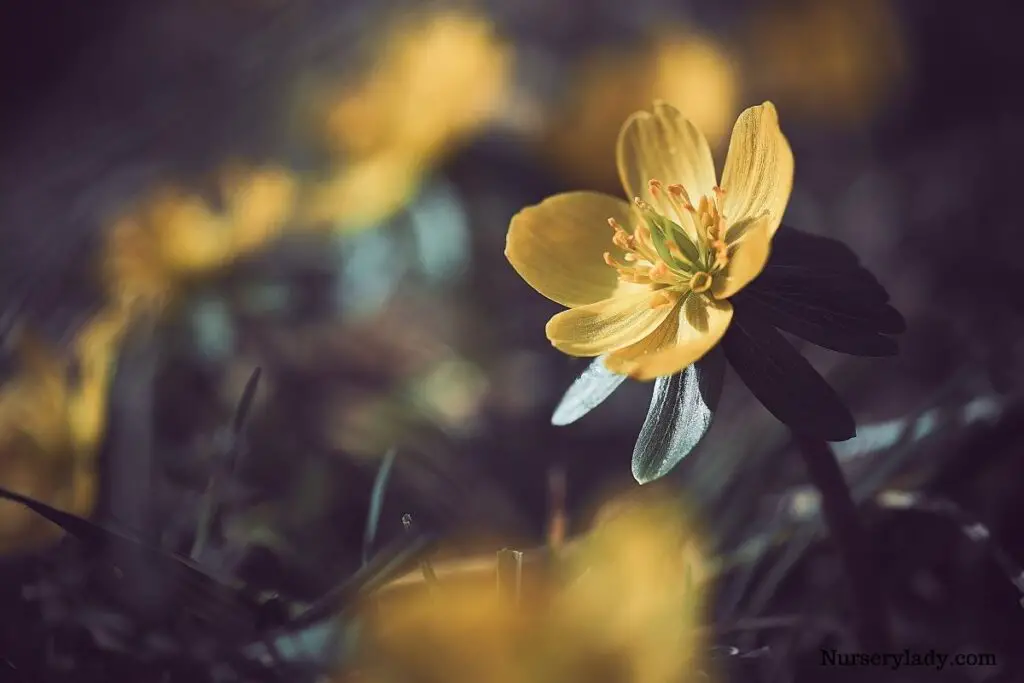
Winter aconite produces golden-yellow flowers and green leaves under the flower heads.
They bloom in winter through the snow and are low maintenance, and they will self-seed once established.
Light: Winter aconite can grow in almost all light conditions. They will grow and bloom best in a location with 6-8 hours of full sun or bright indirect light.
Watering: Winter aconite frequent watering during hot weather. In cold months they can survive without watering, or supplemental watering is sufficient.
Fertilizer: Winter aconite can thrive without fertilizing. Though amending compost or manure into the soil during spring will help boost the nutrient content of the plant.
General care: Winter aconite can grow in all humidity conditions. They doest need spring or warm temperatures to grow and bloom. They develop best in alkaline soil.
Persian buttercups
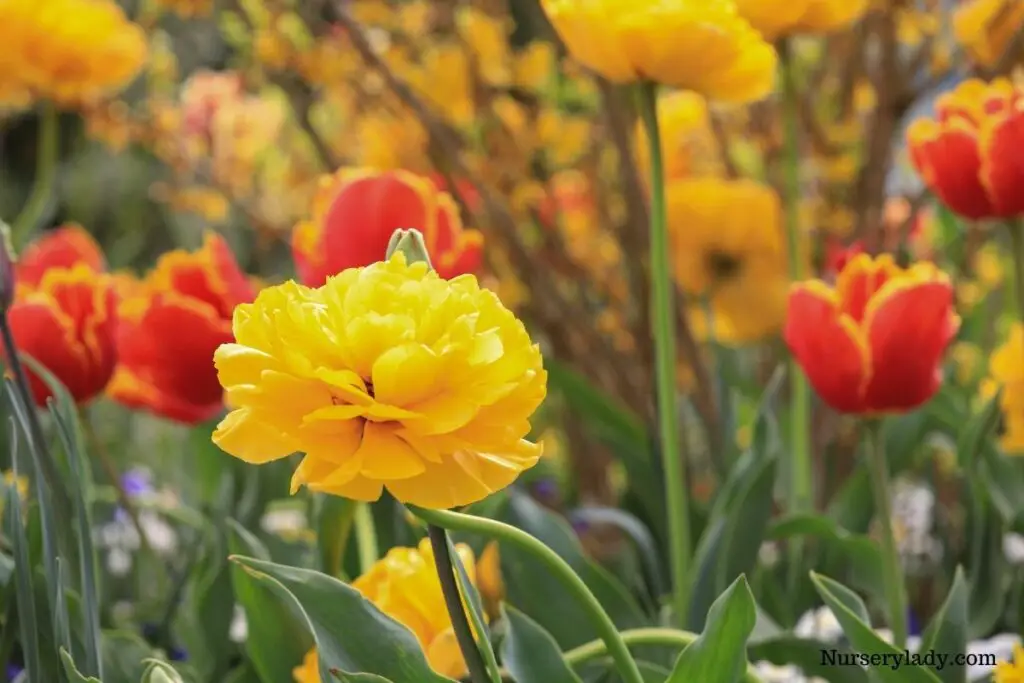
Persian buttercups produce attractive blooms in a wide range of colors. They are a favorite among florists due to their brilliant colors.
They will bloom in late spring to early summer. They are low-maintenance and fast-growing plants.
Light: Persian buttercups prefer locations with full sun to have the best growth and blooms. They need at least 6-8 hours of direct sun to thrive. Choose a spot where it can receive enough light for long hours.
Watering: Persian buttercups need regular watering until established. Established plants should be watered only when the soil is dry. Keep the soil moderately moist and ensure proper drainage.
Fertilizer: Persian buttercups should be fertilized while planting with compost or bulb fertilizer. Feed them monthly or biweekly from the next growing season with a water-soluble food.
General care: Persian buttercups prefer dry and cool conditions. Too much heat and humidity can lead to root rot. They should not be kept at temperature levels above 90°F, or they can go dormant. Mulching will help in keeping the plant cool and save them from heat.
Reference: The University of Minnesota, Kansas State University, BBC Wildlife Magazine, Arizona-Sonora Desert Museum.
